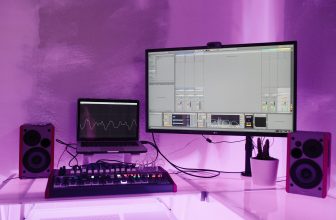
Screen recordings have become a powerful tool for sharing information, tutorials, demonstrations, and creative ideas. Whether you’re showcasing a new app, sharing a step-by-step guide, or providing game walkthroughs, optimizing your screen recordings for social media ensures your content reaches the widest possible audience and leaves a lasting impact. Here’s a detailed guide to help you optimize screen recordings for social media sharing effectively.
Understanding Social Media Requirements
Each social media platform has its own set of specifications for video content, including aspect ratios, resolutions, file sizes, and durations. Before diving into optimization, it’s crucial to tailor your screen recordings to these requirements:
Instagram:
Feed: 1:1 or 4:5 aspect ratio.
Stories/Reels: 9:16 aspect ratio.
Maximum duration: 60 seconds for Reels; up to 15 seconds per Story segment.
Facebook:
Feed: 1:1 or 16:9 aspect ratio.
Stories: 9:16 aspect ratio.
Maximum duration: 240 minutes, but shorter videos perform better.
Twitter:
Aspect ratio: 1:1 or 16:9.
Maximum duration: 2 minutes and 20 seconds.
TikTok:
Aspect ratio: 9:16.
Maximum duration: 10 minutes, but shorter videos (under 1 minute) perform best.
YouTube:
Standard videos: 16:9 aspect ratio.
Shorts: 9:16 aspect ratio.
Best Practices for Screen Recording
1. Prepare Your Screen
Before recording, ensure your screen is clutter-free to maintain a professional appearance. Remove unnecessary notifications, icons, and background apps that may distract viewers.
Set up the resolution: Record in the highest resolution supported by your screen and editing software. Aim for 1080p or 4K for crisp visuals.
Frame the content: Focus on the most relevant section of your screen and crop out irrelevant areas.
2. Optimize Audio Quality
Good audio is just as important as high-quality visuals. Use a dedicated microphone or a high-quality headset to reduce background noise and improve clarity. If your screen recording involves a voiceover, script your narration to maintain a smooth flow.
3. Select the Right Screen Recording Software
Choose software that suits your content creation needs. Popular options include:
Camtasia: Ideal for tutorials with built-in editing tools.
OBS Studio: A free and versatile option for live streaming and recording.
QuickTime Player (Mac): Simple and built into macOS.
Loom: Great for quick recordings and sharing.
4. Highlight Key Elements
Use tools like zoom, annotations, and cursor highlights to draw attention to critical sections of your screen. This helps retain viewer interest and ensures your message is understood clearly.
Editing Your Screen Recordings for Social Media
Editing is where the magic happens. Transform raw screen recordings into polished, engaging videos with these tips:
1. Trim and Cut
Remove unnecessary sections at the beginning and end of your recording. Use jump cuts to eliminate pauses and maintain a brisk pace.
2. Add Captions and Subtitles
Many viewers watch social media videos without sound, so adding captions or subtitles is essential. Tools like Adobe Premiere Pro, Final Cut Pro, or Kapwing can help you add text overlays easily.
3. Incorporate Branding
Include your logo, brand colors, or a watermark to make your content recognizable. Ensure the branding is subtle and doesn’t obstruct the main content.
4. Enhance Visual Appeal
Transitions: Add smooth transitions between clips.
Filters: Apply filters or color corrections to enhance the visuals.
Graphics: Include callouts, arrows, or other graphics to emphasize points.
5. Optimize for Mobile Viewing
Most social media users access content on mobile devices. Ensure your text and graphics are large enough to be legible on smaller screens. Crop your video to suit the platform’s aspect ratio.
Compressing Screen Recordings for Social Media
Large video files can hinder upload speeds and exceed platform size limits. Compress your recordings without sacrificing quality using tools like:
HandBrake: Open-source software for compressing video files.
Adobe Media Encoder: Offers advanced compression options.
Online Video Compressors: Quick and user-friendly options like Clideo or VEED.
Adding Engaging Elements
1. Music and Sound Effects
Add background music or sound effects to make your video more dynamic. Use royalty-free libraries like Epidemic Sound, Artlist, or YouTube Audio Library to avoid copyright issues.
2. Call-to-Actions (CTAs)
Encourage engagement by including CTAs such as:
“Swipe up to learn more.”
“Follow for more tips.”
“Click the link in bio.”
3. Thumbnail Creation
Design an eye-catching thumbnail for platforms that display thumbnails, like YouTube or Facebook. Use tools like Canva or Adobe Spark for professional-looking designs.
Testing and Uploading
1. Test on Different Devices
Before uploading, view your video on various devices (smartphones, tablets, desktops) to ensure quality and readability across platforms.
2. Optimize Upload Settings
Follow these general upload recommendations:
Use MP4 format with H.264 codec.
Maintain a resolution of 1080p or higher.
Keep the file size under the platform’s limit.
3. Upload at Peak Times
Maximize reach by posting during your audience’s active hours. Analyze platform insights to determine the best times to share your content.
Analyzing Performance
After sharing your optimized screen recording, monitor its performance:
Engagement Metrics: Track likes, shares, comments, and saves.
View Time: Measure how long viewers stay engaged.
Feedback: Respond to comments and use feedback to improve future recordings.
Conclusion
Optimizing screen recordings for social media sharing involves more than just hitting the record button. By tailoring your videos to platform specifications, editing with precision, and enhancing their visual and auditory appeal, you can create compelling content that resonates with your audience. Take the time to plan, record, and edit your screen recordings to stand out in the ever-evolving world of social media. With consistent effort and attention to detail, your screen recordings can captivate viewers and achieve your goals.









